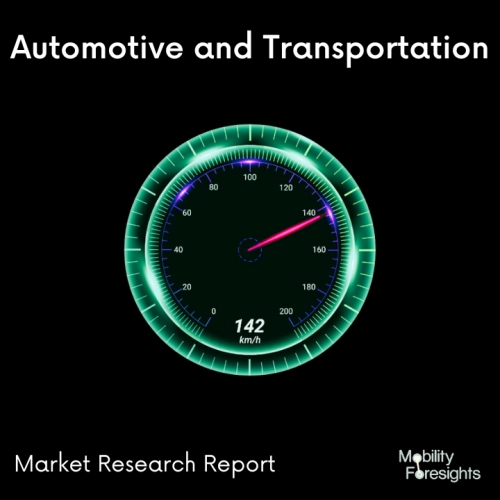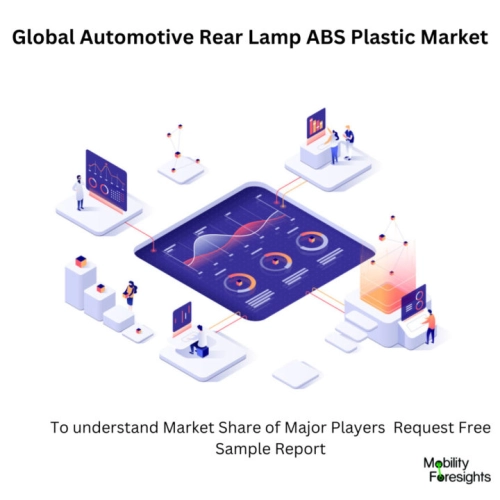
- Get in Touch with Us

Last Updated: Apr 25, 2025 | Study Period: 2023-2030
INTRODUCTION
Trim panels and taillight housing are frequently constructed out of ABS and PC/ABS. Most lamp reflectors use materials like BMC, PET, etc.
BMC is a novel material that combines the benefits of reinforced engineering plastics and thermosetting polymers. Above the bumper on the back of the automobile are positioned the taillights.
They are white lights next to red ones that are used to signal when the car is in reverse. To enable safe nighttime driving, cars on the road use their tail lights to alert other drivers to their presence.
GLOBAL AUTOMOTIVE REAR LAMP ABS PLASTIC MARKET SIZE AND FORECAST

The Global Automotive Rear Lamp ABS plastic market accounted for $XX Billion in 2022 and is anticipated to reach $XX Billion by 2030, registering a CAGR of XX% from 2023 to 2030.
RECENT DEVELOPMENT
Using a cutting-edge process and PLEXIGLAS® moulding compounds, ODELO creates the Tail Light for the Audi A6.The simultaneous Branson laser welding method is used by automotive supplier Odelo to create the taillights for the Audi A6.
Enhancing the creative potential of taillights are PLEXIGLAS® moulding materials and a cutting-edge welding method. The PMMA brand from Röhm enables precisely shaped light designs.An attractive taillight's design, interaction of its features, material quality, and manufacturing process are all important factors.
The Audi A6's tail lights contain parts made from PLEXIGLASS® moulding materials by Röhm. They are created by odelo, a top producer of car lighting components, utilising the simultaneous Branson laser welding method, which enables the connection of angled and complex components with a minimum amount of joining webs.
Modern processing techniques ease the creation of taillights with highly graded shapes, elevating the design of contemporary car illumination to a whole new level. In the case of the A6, the taillights' various, welded-together components include the PLEXIGLAS® cover and the ABS plastic housing. There are several methods for connecting components.
Vibration welding with infrared preheating, which was once prevalent, has the drawback that relative movements of the components can lead to uneven fusing and fitting tolerances. As a result, the appearance of the finished product may be compromised by welding seams.
COMPANY PROFILE
THIS REPORT WILL ANSWER FOLLOWING QUESTIONS
| Sl no | Topic |
| 1 | Market Segmentation |
| 2 | Scope of the report |
| 3 | Abbreviations |
| 4 | Research Methodology |
| 5 | Executive Summary |
| 6 | Introduction |
| 7 | Insights from Industry stakeholders |
| 8 | Cost breakdown of Product by sub-components and average profit margin |
| 9 | Disruptive innovation in the Industry |
| 10 | Technology trends in the Industry |
| 11 | Consumer trends in the industry |
| 12 | Recent Production Milestones |
| 13 | Component Manufacturing in US, EU and China |
| 14 | COVID-19 impact on overall market |
| 15 | COVID-19 impact on Production of components |
| 16 | COVID-19 impact on Point of sale |
| 17 | Market Segmentation, Dynamics and Forecast by Geography, 2023-2030 |
| 18 | Market Segmentation, Dynamics and Forecast by Product Type, 2023-2030 |
| 19 | Market Segmentation, Dynamics and Forecast by Application, 2023-2030 |
| 20 | Market Segmentation, Dynamics and Forecast by End use, 2023-2030 |
| 21 | Product installation rate by OEM, 2023 |
| 22 | Incline/Decline in Average B-2-B selling price in past 5 years |
| 23 | Competition from substitute products |
| 24 | Gross margin and average profitability of suppliers |
| 25 | New product development in past 12 months |
| 26 | M&A in past 12 months |
| 27 | Growth strategy of leading players |
| 28 | Market share of vendors, 2023 |
| 29 | Company Profiles |
| 30 | Unmet needs and opportunity for new suppliers |
| 31 | Conclusion |
| 32 | Appendix |